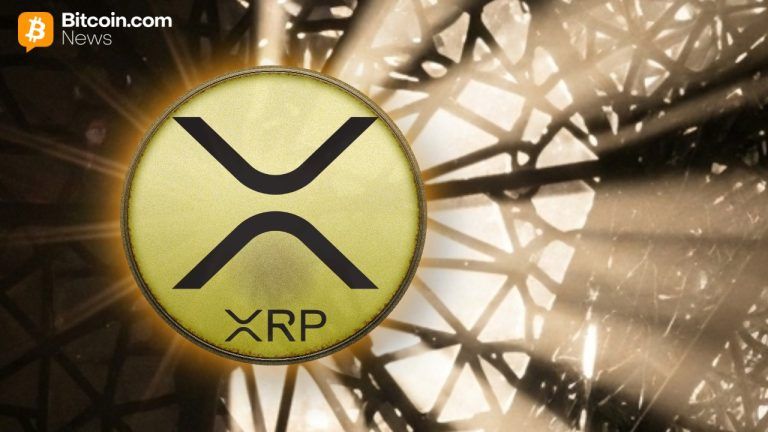ARTICLE AD BOX
Luisa Crawford Sep 16, 2024 16:07
Explore the critical differences between Ethereum ETPs and ETFs, their implications for the crypto industry, and the broader financial market.

Following the listing of Bitcoin exchange traded products (ETPs) earlier this year, U.S. stock exchanges made available ETPs based on Ether, the asset native to the Ethereum blockchain, for the first time on July 23. Investors can now buy, sell, and invest in shares of products that hold Ether (ETH) on markets such as NASDAQ and the New York Stock Exchange. The significance of this development cannot be overstated — not just what it means for Ethereum, but what it means for crypto as an asset class, according to a16z crypto.
ETH ETP: Why it matters for Ethereum
For Ethereum, the ETP approvals settle a longstanding question. At its inception, Ethereum was created and financed by a combination of founders and investors. The prominent role of these creators and supporters caused some to question that the original distribution of Ether formed part of an investment contract, thus a security under federal law. Over time, the role of these early participants diminished and the development of the Ethereum blockchain became diffuse. Today it rests in the hands of its user community.
An asset’s status as a security or a non-security affects the way it is regulated. Ether being a non-security makes it more like other commodities, like oil, that have no central owner and operator. If Ether were a security that would subject it and transactions in ETH to a panoply of compliance and ongoing disclosure requirements. Worse yet, it is unclear how Ethereum could even comply with those rules given that it is a decentralized open-source project with many contributors and no single party in control. Those impossible-to-meet obligations could have severely jeopardized the promise of Ethereum and other blockchain-based technologies.
The ETP listings indicate that the SEC has reevaluated the status of Ether, whatever the circumstances around its launch may have been. It seems fair to conclude that the SEC, in reaching its conclusion on ETH ETPs, applied its 2019 framework, which sets out how assets involved in potential securities transactions can transition to become non-securities. Its treatment of the ETH ETP indicates the SEC has concluded that ETH is not a security and that offers and sales of ETH are not securities transactions, thereby setting an example for others.
ETH ETP: Why it matters for the crypto industry
The SEC’s ETH ETP decisions have major ramifications that extend far beyond Ethereum. After significant delay and regulatory uncertainty caused by the SEC’s ambiguity and silence around ETH, the new ETPs indicate there is indeed a pathway for digital assets securities to transition to non-securities. Importantly, if Ether can become a non-security, so can other digital assets. It’s hard to imagine a more consequential precedent to set for the crypto industry.
Whether the SEC wanted to hand the crypto market a “win” or not, it has. The SEC’s acknowledgment underscores the dynamic nature of crypto and the importance of modernizing securities regulation to accommodate crypto’s integration into the broader system of commerce and financial transactions. Even if incidental, regulatory progress is underway. The regulatory approval of the ETP listings potentially opens significant investor access to crypto assets, unlocks billions of dollars in value, and widens the universe of crypto asset investment. And indeed, we already have more than one issuer attempting to launch ETPs in yet another crypto asset, Solana. Expect more to come.
ETP basics
What is an ETP?
ETPs, or exchange traded products, are typically trusts or other entities that hold one or more underlying assets. ETP shares trade on national securities exchanges and represent interests in those assets held by the trust. The shares are offered pursuant to a registration statement filed with the SEC and effectively track the value of the assets held by the ETP. If you hold any exchange-traded baskets of commodities, such as SPDR’s popular gold-tracking product GLD, you’re probably using an ETP.
Why use an ETP?
Traditionally, ETPs have offered numerous advantages over holding the underlying assets directly, such as improved liquidity, secure and convenient custody, best execution of trades, and favorable tax implications, including potential capital gains tax advantages due to the buyers and sellers electing when to realize taxes. The situation is more complicated for crypto assets, as discussed later.
How do ETPs work?
Typically, ETP shares are kept aligned through arbitrage and a process of creation and redemption: When the public ETP trading price exceeds the value of the underlying assets, ETP shares are created and the additional supply brings the price down to align with the asset price and when the ETP share price is below the asset’s market price, the ETP shares can be redeemed to increase the ETP share value. In most ETPs this is done by a group of “authorized participants” that can deliver assets or shares to the issuers, depending on whether a creation or redemption event is taking place.
What’s the difference between an ETP and ETF?
While offers of ETPs, exchange traded products, and ETFs, exchange traded funds, are both SEC registered, they differ significantly in terms of regulatory requirements and structure. ETFs are trusts that primarily hold securities, ETPs are trusts that primarily hold non-securities. As a result, ETPs are registered on SEC Form S-1, which is generally used for offers and sales of securities of issuers that are not “investment companies” under the Investment Company Act of 1940 (the “40 Act”). In contrast, ETFs register on SEC Form N-1A, a form specifically designated for investment companies.
Put simply, an investment company is an entity that is:
- engaged in the business of investing, owning, holding, or trading in securities; and
- owns “investment securities” having a value exceeding 40% of the value of the entity’s total assets (exclusive of U.S. government securities and cash items).
This regulatory difference has significance. ETPs are treated like all other public companies and, while they must comply with the reporting and other requirements of the Securities and Exchange Act of 1934, they are not subject to the additional layer of regulation that comes with being a registered investment company. By contrast, ETFs, because they are in the business of investing in securities, become subject to the ‘40 Act, and must comply with its many restrictions on liquidity, affiliated transactions and a host of other compliance matters.
(In practice, some entities that invest in commodities or pools of non-securities can opt into treatment as an investment company by placing their assets in a subsidiary. Because they now own securities, i.e. the shares of its subsidiary, they are now investing in securities and are subject to the ‘40 Act. Occasionally, issuers will do this to be able to market their products as funds subject to the additional protections of the ‘40 Act.)
Going deeper: Crypto ETPs
Bitcoin vs. Ethereum: What’s in a BTC ETP vs. ETH ETP?
Bitcoin and Ether are two of the most prominent digital assets, yet they serve fundamentally different purposes. BTC is primarily a unit of exchange or account on a distributed ledger, functioning as a decentralized digital currency. Its primary utility is its ability to facilitate peer-to-peer transactions without the need for intermediaries.
By contrast, ETH acts as a unit of compute within a global virtual computer known as the Ethereum network. This network supports smart contracts and decentralized applications (dApps), enabling a wide range of functionalities beyond value transfer. Consequently, while both BTC and ETH are important to the digital asset ecosystem, their differing utilities underscore their unique roles and potential applications.
What are the advantages of ETH ETPs?
For crypto assets, some of the traditional advantages of ETPs may not exist. For instance, direct holders of ETH have 24×7 liquidity in crypto markets and can maintain direct control of the asset. Some buyers, particularly buyers new to crypto, may be more comfortable with owning ETPs than owning their assets in wallets or crypto custodial arrangements. Although exchanges on which ETP shares trade are often deeper than markets for the asset(s) underlying the ETP, it remains to be seen whether ETH and other crypto-based ETPs will enjoy markets of comparable or better depth than those found on today’s crypto trading platforms. Additionally, for reasons discussed below, the ETP shares may trade at a discount to ETH due to certain operational limitations placed on the ETPs.
Even so, ETP products for ETH can expand the market of potential buyers and sellers of ETH to fiduciaries that would otherwise be precluded due to myriad reasons including, investment restrictions or compliance considerations. Holding assets through an ETP can significantly reduce the complications associated with managing and safeguarding assets. For example, while holding crypto can be technologically complex for some investors and consumers, ETPs provide individuals the option to have a regulated institution manage custody for them while investing in the asset class.
What are the disadvantages of BTC and ETH ETPs?
One limitation placed on the ETH and BTC ETPs is that, unlike most other ETP products, one mechanism by which the trading price of the ETP is kept in line with the market value of the underlying asset is constrained.
Under the SEC orders for ETH ETPs, buyers cannot bring the underlying ETP assets to the trust and request ETP shares in exchange, and sellers cannot request redemptions of ETP shares they acquire in the market and receive underlying assets. Under the SEC ETH orders, the creation and redemption of ETP shares can only settle for cash. Although this is not important to most individual investors, this limitation on institutions maintaining liquidity when there are buy and sell excesses in the arbitrage process may subject the issuer to inefficiency as it attempts to acquire or dispose of underlying assets. Given the volatility in crypto prices, this extra step may result in spreads between the ETP price and the value of the asset that it is designed to track. This unfortunate limitation may lessen the attractiveness of the ETP product as a way to gain exposure to this asset class.
How do ETH ETPs deal with staking?
ETH ETPs have another quirk: the SEC orders approving them contain a prohibition against “staking,” the process for securing the blockchain, which in return dispenses rewards. This is a right that direct holders of the asset can exercise. ETH ETP owners are now exposed to the underlying ETH asset but precluded from earning any additional ETH through staking rewards. This prohibition on staking may complicate the arbitrage process described above and could be considered a “bug” of holding the ETH ETP, rather than owning ETH directly, depending on the investors’ views.
On the one hand, eliminating staking could be considered a “feature” as it simplifies some aspects of the ETPs, including reducing technical complexity, liquidity constraints, and the risk of slashing, the loss of ETH due to computational misconduct. On the other hand, being able to stake ETH that is directly held, can provide a source of income and defray carrying costs of the investment. It will be interesting to follow the pricing implications to ETH ETPs of the prohibition on staking ETP-held ETH. If the foregone income is reflected in a discount in the pricing of ETP units, some investors may prefer holding ETH ETPs to holding ETH directly. In other words they may find the discount more attractive than the potential staking returns which, as described above, come with some complications.
A second-order effect of the staking prohibition is that it could cause network security issues to the extent that an outsized portion of all ETH is locked in the ETP and prohibited from staking. Although unlikely, this would result in a smaller (relatively speaking) set of holders of ETH that validate transactions in ETH and could provide that group disproportionate influence.
What’s more advantageous: ETH ETPs or directly holding ETH?
Investors can weigh the convenience and accessibility of holding ETPs against the benefits of direct ownership. While the ETP can offer some ease of trading and storage advantages, direct ownership provides greater control, participation rights, and the ability to stake ETH.
Ultimately, the approval of ETH ETPs provides investors with an additional method to acquire exposure to ETH. Which alternative they choose will depend on each of their own assessments of the factors outlined above and whether they intend to use ETH for its computational purposes. Regardless of their choice, having options, particularly an option that recognizes that decentralized digital assets such as ETH, are non-securities, is a very positive development.
Image source: Shutterstock
 (1).png)








 English (US) ·
English (US) ·